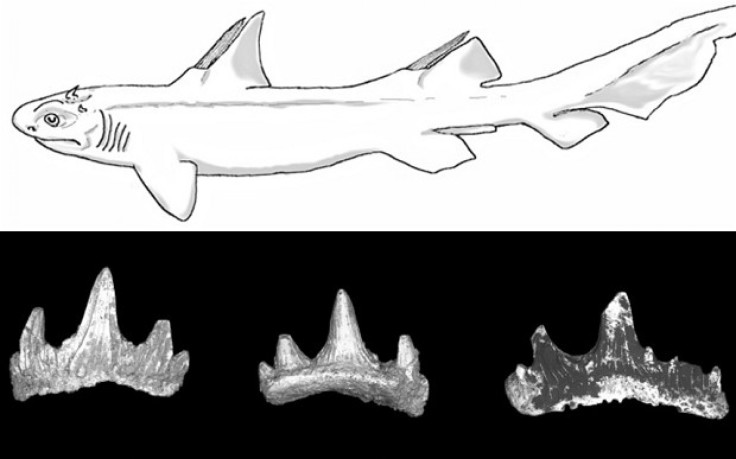The Week In Science: Devil Sharks, Smart Dolphins And Stalking Trash Cans

This week in science, we worried about bird flu and climate change, celebrated the Curiosity rover’s first anniversary on Mars and eagerly awaited the peak of the Perseid meteor shower, which arrives this weekend. But there’s a lot more science news afoot, so here’s a roundup of what we missed:
Meet Diablodontus michaeledmundi, a newly discovered prehistoric shark that’s been chilling in a piece of limestone underneath Arizona for 260 million years. The first part of its name means “devil tooth,” and its teeth aren’t the only diabolical thing about it – Diablodontus also sports a pair of spikes on its head that make the resemblance to Lucifer all the more striking. [Discovery]
Huge, ancient Maya carvings were unearthed in Guatemala recently. Archaeologists found a frieze 26 feet long and seven feet high on the foundations of a rectangular pyramid in the Maya city of Holmul. The carvings show human figures and spirits, and bear faint traces of colored paint. [National Geographic]
Dolphins continue to demonstrate their uncanny brainpower in a new study that highlights the animal’s problem-solving abilities. A dolphin named Tanner was trained to imitate the movements of his human trainer, normally by watching as the person moved. But even when blindfolded, Tanner figured out how to follow his instructions – he used his echolocation abilities to “see” how the trainer moved, and mimicked the human perfectly. [USA Today]
The descendants of Henrietta Lacks have reached an agreement with the U.S. National Institutes of Health concerning the use of their ancestor’s biological material. Lacks died of cervical cancer in 1951, though cells from her tumors have thrived in laboratories across the world since then. These “HeLa” cells have been proved invaluable for research and have been examined in more than 74,000 studies, but Lacks was never asked for permission to harvest them, and her family has largely been left without a say in the matter. Now, the family has successfully lobbied for researchers to take genetic information on the cells down from a public database. [NYTimes]
We tend to assume that any material in its solid form is, well, as solid as it can get. But that might not always be true. Based on computer simulations of virtual models, researchers think there may be some materials that are more stable in their liquid state than in their solid, crystal state. [LiveScience]
Now there’s yet another reason to worry about tracking your every move besides the National Security Administration: trash cans. In London, marketing firm Renew is promoting rubbish bins that track Wi-Fi enabled smartphones that pass by, creating a rough map of where a person goes. The company says it’s looking to bring the devices to New York City and Singapore as well. [The Verge]
This weekend, if you want to check up on the puffins nesting in Maine, you can do that from the comfort of your own home. [Puffin cam via Audubon Society]
© Copyright IBTimes 2024. All rights reserved.











